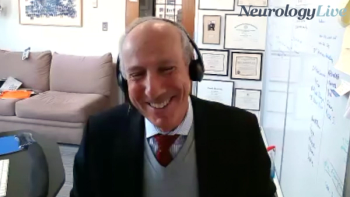
- December 2021
- Volume 4
- Issue 7
Cluster Headache: A Clinical Overview
As the most common trigeminal autonomic cephalalgia, this unilateral and severe headache is accompanied by ipsilateral autonomic features and is often challenging to treat.
CLUSTER HEADACHE (CH), the most common trigeminal autonomic cephalalgia (TAC), is defined as a unilateral severe headache accompanied by ipsilateral autonomic features such as unilateral ptosis, miosis, conjunctival injection, rhinorrhea, and lacrimation, as well as restlessness.
Two main distinguishing features of CH compared with other TACs is a duration of 15 to 180 minutes per attack and circadian periodicity with headaches recurring typically at the same time each day. Patients may experience between 1 attack every other day to up to 8 attacks a day. As opposed to migraine headaches, in which the affected side may switch from one side to the other during an attack and from one attack to the next, CHs are typically side locked during attacks and affect the same side with most if not all attacks. In some instances, the severity of CH can lead to suicidality.1
According to the third edition of the International Classification of Headache Disorders, episodic CH is defined as attacks over periods of weeks to months with pain-free intervals of at least 3 months or longer. Chronic CH, on the other hand, is characterized by episodes that last for a year or longer without remission or with pain-free intervals of less than a month.2 Identifying CH may be delayed by several years, therefore it is important to include questions addressing autonomic features in questionnaires used to elicit a headache history.3
Epidemiology
The peak prevalence of CH is between 20 to 50 years of age and the lifetime prevalence of the condition is estimated to be approximately 0.1%.4 CH can occur in children, although it is rare. Risk factors for CH may include head trauma, smoking, and passive smoke exposure, as well as genetic factors, with 5% to 20% of patients with CH endorsing a positive family history.5,6 Genome-wide association studies have identified multiple genetic risk loci for CH, but no clear mode of inheritance has been established in the literature.7 Previously, the male-to-female ratio of prevalence had been estimated to be 4:1, but findings from more recent epidemiological studies suggest a ratio of 2:1 or 3:1.4,8
Pathophysiology
In addition to information gleaned from clinical features, animal experiments, and known secondary causes, results from functional imaging studies have contributed to our understanding of the pathophysiology of CH, showing attack-related activation of the posterior ipsilateral hypothalamus.9 This most likely contributes to the circadian and seasonal rhythmicity of CH. Orexins, which are primarily synthesized by hypothalamic nuclei, are involved in pain modulation as well and may be implicated in CH.10
Data suggest that secondary activation of the trigeminal nerve and the trigeminovascular complex contribute to pain; the trigeminal autonomic pathways including the superior salivatory nucleus centrally and sphenopalatine ganglion peripherally mediate the autonomic features in CH.11 Implicated mediators include vasoactive intestinal peptide, nitric oxide, and calcitonin gene-related peptide (CGRP).12 In 1 study of patients with episodic CH, CGRP infusion triggered attacks during a cycle of CH.13
Differential Diagnosis
The differential diagnosis of CH is divided into secondary causes of vascular type such as cervical arterial dissection, intracavernous carotid artery thrombosis or hemangioma, and cerebral venous sinus thrombosis on one hand, and nonvascular etiologies such as glaucoma, sphenoid sinusitis, nasopharyngeal malignancies, trigeminal nerve root compression, and pituitary tumors on the other. Other primary headaches such as other subtypes of TAC, migraine, trigeminal neuralgia, and primary stabbing headache can also cause unilateral frequent headaches.
Workup
Because of possible secondary mimics, the workup of patients presenting with CH usually includes brain imaging, preferably a brain MRI with contrast as well as vascular imaging of the head and neck.
Treatment
The management of CH is divided into 3 categories: acute treatment, transitional/bridging treatment, and preventive treatment.
Acute Treatment
The structures implicated in the pathophysiology of CH explain some of its unique treatments such as oxygen, which is specific, effective, and safe in the acute management of CH. Randomized controlled trials (RCTs) support the usage of 100% oxygen with a nonrebreather mask, at 10 L/min to 15 L/min for 15 minutes.14 The type of mask used, such as demand valve oxygen, may also be important in the effectiveness of oxygen therapy.15 Recently, discussion between patient and physician advocacy groups and the Centers for Medicare & Medicaid Services about reimbursement and coverage for oxygen therapy for patients with CH has led to changes in the national coverage determinations. These allow Medicare administrative contractors to make coverage determinations regarding the use of home oxygen and oxygen equipment for CH, expand patient access to oxygen and oxygen equipment in the home, and permit contractors to cover the use of home oxygen and oxygen equipment to treat CH.
Noninvasive stimulation of the vagus nerve, via an FDA-approved device marketed under the name of gammaCore, has also been shown to be effective as an acute treatment in episodic CH. The device is used to deliver 3, 2-minute stimulations of the ipsilateral cervical branch of the vagus nerve.16,17
Transitional/Bridging Treatment
Because of their rapid onset of action, parenteral triptans such as sumatriptan subcutaneous (SC) 4 mg to 6 mg; sumatriptan nasal spray 20 mg; zolmitriptan nasal spray 5 mg; intramuscular, SC, and nasal dihydroergotamine; and lidocaine nasal spray are also commonly used for the acute treatment of CH. Among these treatments the FDA has approved only SC sumatriptan, but usage of the other treatments is evidence-based.18-20
While waiting for a preventive treatment to become effective, bridging/transitional therapies are also often used. These include high-dose oral steroids such as prednisone 60 mg to 80 mg per day tapered over 2 weeks, prednisone 100 mg for 5 days followed by a 20-mg taper every 3 days, or dexamethasone [Decadron] 4 mg twice daily for 1 week followed by 4 mg daily for 1 week.21,22 Ipsilateral suboccipital nerve blocks using a combination of an anesthetic such as lidocaine or bupivacaine [Marcaine] and 40 mg to 80 mg triamcinolone or prednisolone can also be effective and obviate the need for systemic steroids.23
Preventive Treatment
Verapamil in doses ranging from 240 mg to 480 mg daily in 3 divided doses is widely used as a first-line preventive treatment of CH. Because large doses may be needed, clinicians should obtain a baseline electrocardiogram (EKG) and blood pressure recording. Doses should be increased slowly, usually by 80 mg in total daily dose every 2 weeks; an EKG should be obtained prior to each increment to follow the PR interval because the atrioventricular blocking effect of verapamil may be delayed by 10 days. Dosing should not exceed 960 mg per day.24
Support also exists for the use of lithium in prophylaxis of both episodic and chronic CH; however, this treatment has a narrow therapeutic window and dosing is based on serum levels and adverse effects. In addition, thyroid and kidney function should be measured at baseline and periodically. Therapeutic doses range from 600 mg to 1200 mg daily.25 Preventive treatment is usually continued for 2 weeks after the end of a CH cycle.
The SC injection of the CGRP monoclonal antibody galcanezumab 300 mg has also been shown to reduce the number of CH attacks over 3 weeks in patients with episodic CH in an RCT.26 This FDA-approved treatment has a favorable adverse effect profile and can be used once a month for up to 3 months in patients with episodic CH.
The FDA has also approved neuromodulation with vagal nerve stimulation as an adjunctive treatment for the prevention of episodic CH. Injection of the sphenopalatine ganglion peripherally has anecdotally been reported to be useful as well, but needs to be further studied to establish a standardized technique.27
For patients with chronic refractory CH, neuromodulation of the sphenopalatine ganglion via an implanted microstimulator in the pterygopalatine fossa has been shown to be safe and effective but its usage has not yet been cleared by the FDA.28 Deep brain stimulation of primarily the posterior hypothalamus and the ventral tegmentum is also reported as a treatment in chronic refractory CH but carries a high surgical risk.29
REFERENCES
1. Ji Lee M, Cho SJ, Wook Park J, et al. Increased suicidality in patients with cluster headache. Cephalalgia. 2019;39(10):1249-1256. doi:10.1177/0333102419845660
2. Headache Classification Committee of the International Headache Society (IHS) The International Classification of Headache Disorders, 3rd edition. Cephalalgia. 2018;38(1):1-211. doi:10.1177/0333102417738202
3. Buture A, Ahmed F, Dikomitis L, Boland JW. Systematic literature review on the delays in the diagnosis and misdiagnosis of cluster headache. Neurol Sci. 2019;40(1):25-39. doi:10.1007/s10072-018-3598-5
4. Fischera M, Marziniak M, Gralow I, Evers S. The incidence and prevalence of cluster headache: a meta-analysis of population-based studies. Cephalalgia. 2008;28(6):614-618. doi:10.1111/j.1468-2982.2008.01592.x
5. Manzoni GC. Cluster headache and lifestyle: remarks on a population of 374 male patients. Cephalalgia. 1999;19(2):88-94. doi:10.1046/j.1468-2982.1999.019002088.x
6. Leone M, Russell MB, Rigamonti A, et al. Increased familial risk of cluster headache. Neurology. 2001;56(9):1233-1236. doi:10.1212/wnl.56.9.1233
7. Harder AVE, Winsvold BS, Noordam R, et al. Genetic Susceptibility Loci in Genomewide Association Study of Cluster Headache. Ann Neurol. 2021;90(2):203-216. doi:10.1002/ana.26146
8. Wei DYT, Yuan Ong JJ, Goadsby PJ. Cluster headache: epidemiology, pathophysiology, clinical features, and diagnosis. Ann Indian Acad Neurol. 2018;21(suppl 1):S3-S8. doi:10.4103/aian.AIAN_349_17
9. Sprenger T, Boecker H, Tolle TR, Bussone G, May A, Leone M. Specific hypothalamic activation during a spontaneous cluster headache attack. Neurology. 2004;62(3):516-517. doi:10.1212/wnl.62.3.516
10. Holland PR, Goadsby PJ. Cluster headache, hypothalamus, and orexin. Curr Pain Headache Rep. 2009;13(2):147-154. doi:10.1007/s11916-009-0025-x
11. May A, Schwedt TJ, Magis D, Pozo-Rosich P, Evers S, Wang SJ. Cluster headache. Nat Rev Dis Primers. 2018;4:18006. doi:10.1038/nrdp.2018.6
12. Möller M, May A. The unique role of the trigeminal autonomic reflex and its modulation in primary headache disorders. Curr Opin Neurol. 2019;32(3):438-442. doi:10.1097/WCO.0000000000000691
13. Vollesen ALH, Snoer A, Beske RP, et al. Effect of infusion of calcitonin gene-related peptide on cluster headache attacks: a randomized clinical trial. JAMA Neurol. 2018;75(10):1187-1197. doi:10.1001/jamaneurol.2018.1675
14. Cohen AS, Burns B, Goadsby PJ. High-flow oxygen for treatment of cluster headache: a randomized trial. JAMA. 2009;302(22):2451-2457. doi:10.1001/jama.2009.1855
15. Petersen AS, Barloese MC, Lund NL, Jensen RH. Oxygen therapy for cluster headache. A mask comparison trial. A single-blinded, placebo-controlled, crossover study. Cephalalgia. 2017;37(3):214-224. doi:10.1177/0333102416637817
16. Silberstein SD, Mechtler LL, Kudrow DB, et al; ACT1 Study Group. Non-Invasive Vagus Nerve Stimulation for the ACute Treatment of Cluster Headache: findings from the randomized, double-blind, sham-controlled ACT1 study. Headache. 2016;56(8):1317-1332. doi:10.1111/head.12896
17. Goadsby PJ, de Coo IF, Silver N, et al; ACT2 Study Group. Non-invasive vagus nerve stimulation for the acute treatment of episodic and chronic cluster headache: a randomized, double-blind, sham-controlled ACT2 study. Cephalalgia. 2018;38(5):959-969. doi:10.1177/0333102417744362
18. van Vliet JA, Bahra A, Martin V, et al. Intranasal sumatriptan in cluster headache: randomized placebo-controlled double-blind study. Neurology. 2003;60(4):630-633. doi:10.1212/01.wnl.0000046589.45855.30
19. Cittadini E, May A, Straube A, Evers S, Bussone G, Goadsby PJ. Effectiveness of intranasal zolmitriptan in acute cluster headache: a randomized, placebo-controlled, double-blind crossover study. Arch Neurol. 2006;63(11):1537-1542. doi:10.1001/archneur.63.11.nct60002
20. Robbins MS, Starling AJ, Pringsheim TM, Becker WJ, Schwedt TJ. Treatment of Cluster Headache: The American Headache Society Evidence-Based Guidelines. Headache. 2016;56(7):1093-1106. doi:10.1111/head.12866
21. Obermann M, Nägel S, Ose C, et al. Safety and efficacy of prednisone versus placebo in short-term prevention of episodic cluster headache: a multicentre, double-blind, randomised controlled trial. Lancet Neurol. 2021;20(1):29-37. doi:10.1016/S1474-4422(20)30363-X
22. May A, Leone M, Afra J, et al; EFNS Task Force. EFNS guidelines on the treatment of cluster headache and other trigeminal-autonomic cephalalgias. Eur J Neurol. 2006;13(10):1066-1077. doi:10.1111/j.1468-1331.2006.01566.x
23. Leroux E, Valade D, Taifas I, et al. Suboccipital steroid injections for transitional treatment of patients with more than two cluster headache attacks per day: a randomised, double-blind, placebo-controlled trial. Lancet Neurol. 2011;10(10):891-897. doi:10.1016/S1474-4422(11)70186-7
24. Leone M, D'Amico D, Frediani F, et al. Verapamil in the prophylaxis of episodic cluster headache: a double-blind study versus placebo. Neurology. 2000;54(6):1382-1385. doi:10.1212/wnl.54.6.1382
25. Steiner TJ, Hering R, Couturier EG, Davies PT, Whitmarsh TE. Double-blind placebo-controlled trial of lithium in episodic cluster headache. Cephalalgia. 1997;17(6):673-675. doi:10.1046/j.1468-2982.1997.1706673.x
26. Goadsby PJ, Dodick DW, Leone M, et al. Trial of galcanezumab in prevention of episodic cluster headache. N Engl J Med. 2019;381(2):132-141. doi:10.1056/NEJMoa1813440
27. Slullitel A, Santos IS, Machado FC, Sousa AM. Transnasal sphenopalatine nerve block for patients with headaches. J Clin Anesth. 2018;47:80-81. doi:10.1016/j.jclinane.2018.03.025
28. Goadsby PJ, Sahai-Srivastava S, Kezirian EJ, et al. Safety and efficacy of sphenopalatine ganglion stimulation for chronic cluster headache: a double-blind, randomised controlled trial. Lancet Neurol. 2019;18(12):1081-1090. doi:10.1016/S1474-4422(19)30322-9
29. Nowacki A, Moir L, Owen SL, Fitzgerald JJ, Green AL, Aziz TZ. Deep brain stimulation of chronic cluster headaches: posterior hypothalamus, ventral tegmentum and beyond. Cephalalgia. 2019;39(9):1111-1120. doi:10.1177/0333102419839992
Articles in this issue
almost 4 years ago
A Practical Approach to Chronic Immunosuppression in Myasthenia Gravisalmost 4 years ago
Managing and Treating Neuromyelitis Optica Spectrum Disorderalmost 4 years ago
Serotonin Receptor Agonism in Dravet Syndromealmost 4 years ago
An Emerging Framework for Parkinson Disease TherapeuticsNewsletter
Keep your finger on the pulse of neurology—subscribe to NeurologyLive for expert interviews, new data, and breakthrough treatment updates.



































